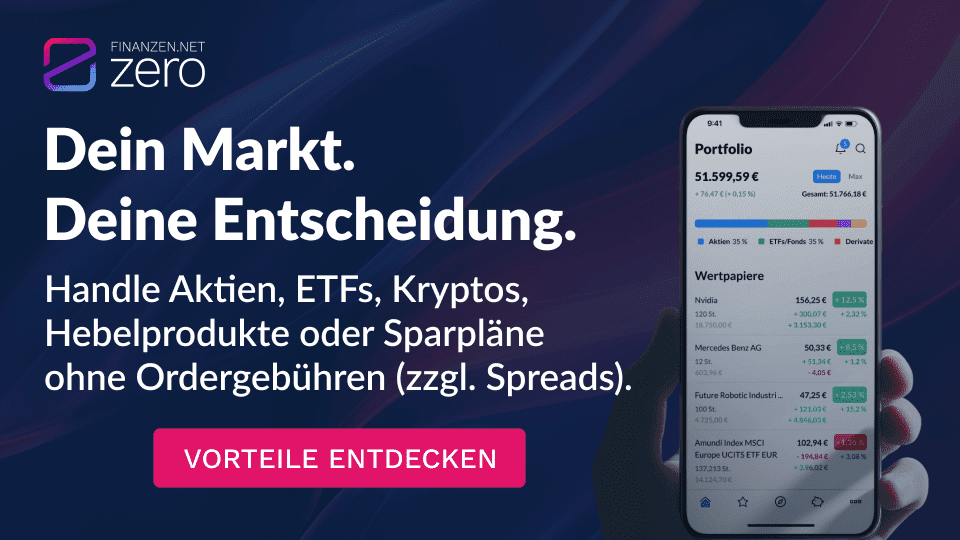Kurse werden geladen...
Prognose
Das durchschnittliche Kursziel der Analysten beträgt 561,08€(+14,90%). Der Median liegt bei 561,47€(+14,98%).
| Kaufen | 51 |
| Halten | 12 |
| Verkaufen | 0 |
Scoring-Modelle
| Dividenden-Strategie | 7 / 15 |
| HGI-Strategie | 4 / 18 |
| Levermann-Strategie | -1 / 13 |

News Zum News-Feed
Mastercard erhöht Rückkaufprogramm auf 14 Milliarden US-Dollar und hebt Quartalsdividende an
Das Board von Mastercard genehmigte ein Aktienrückkaufprogramm in Höhe von bis zu 14 Milliarden US-Dollar, das nach Abschluss des laufenden 12‑Milliarden‑Programms in Kraft treten soll. Zum 5. Dezember waren aus dem aktuellen Programm noch rund 4,2 Milliarden US-Dollar verfügbar. Zudem wurde die Quartalsdividende um 14 Prozent von 76 auf 87 Cent je Aktie erhöht, was einer jährlichen Ausschüttung von 3,48 US-Dollar und einer Rendite von 0,65 Prozent beim Schlusskurs von 537,55 US-Dollar entspricht.» Mehr auf finanzen.net
Mastercard hebt Quartalsdividende an und startet 14 Mrd. US-Dollar Aktienrückkaufprogramm
Der Verwaltungsrat von Mastercard beschloss eine vierteljährliche Bardividende von 0,87 US-Dollar je Aktie, eine Erhöhung um 14 % gegenüber zuvor 0,76 US-Dollar; Auszahlung erfolgt am 9. Februar 2026, Stichtag 9. Januar 2026. Zugleich genehmigte das Unternehmen ein neues Rückkaufprogramm für Stammaktien im Volumen von bis zu 14 Mrd. US-Dollar, das nach Abschluss des laufenden 12‑Mrd.-Programms beginnen soll. Mastercard übertraf im dritten Quartal 2025 die Erwartungen mit einem EPS von 4,38 US-Dollar und einem Umsatz von 8,6 Mrd. US-Dollar, beließ die Prognose für 2025 jedoch unverändert; Analysten hoben daraufhin Kursziele an.» Mehr auf de.investing.com
Mastercard skizziert Wachstumsplan mit Agentic Commerce und Stablecoins
CFO Sachin Mehra stellte auf der Citi-FinTech-Konferenz robuste Ausgabentrends bei Privat- und Geschäftskunden heraus und betonte, dass einkommensschwächere Gruppen keine nennenswerte Schwäche zeigen. Mastercard fokussiert sich strategisch auf Agentic Commerce (Agent Pay weltweite Einführung geplant für 2026) und Stablecoins, um Transaktionsvolumen und Umsatz zu steigern; On‑Ramp‑Volumina bei Stablecoins wuchsen um 25 % im Jahresvergleich. Die Umstellung des Debitkarten-Portfolios von Capital One dürfte 2025 nur geringe Umsatzeffekte haben, während der adressierbare Markt für gewerbliche Zahlungen bei rund 80 Billionen US‑Dollar liegt und Mehrwertdienste bereits 40 % der Umsätze ausmachen. Zudem wurde eine neue Händlervereinbarung mit einer Reduktion der Interbankenentgelte um 10 Basispunkte angekündigt; Risiken bleiben technologische Entwicklungen und regulatorische Herausforderungen.» Mehr auf de.investing.com
Historische Dividenden
Alle Dividenden KennzahlenUnternehmenszahlen
| (EUR) | Sep. 2025 | |
|---|---|---|
| Umsatz | 7,33 Mrd | 10,77% |
| Bruttoeinkommen | 5,72 Mrd | 16,39% |
| Nettoeinkommen | 3,35 Mrd | 14,21% |
| EBITDA | 4,56 Mrd | 19,48% |
Fundamentaldaten
| Metrik | Wert |
|---|---|
Marktkapitalisierung | 436,90 Mrd€ |
Anzahl Aktien | 897,96 Mio |
52 Wochen-Hoch/Tief | 511,93€ - 396,08€ |
Dividendenrendite | 0,56% |
Dividenden TTM | 2,72€ |
Beta | 0,87 |
KGV (PE Ratio) | 36,24 |
KGWV (PEG Ratio) | 6,64 |
KBV (PB Ratio) | 65,22 |
KUV (PS Ratio) | 16,32 |
Unternehmensprofil
Mastercard Incorporated, ein Technologieunternehmen, bietet Transaktionsverarbeitung und andere zahlungsbezogene Produkte und Dienstleistungen in den Vereinigten Staaten und international an. Es erleichtert die Verarbeitung von Zahlungstransaktionen, einschließlich Autorisierung, Clearing und Abwicklung, sowie liefert andere zahlungsbezogene Produkte und Dienstleistungen. Das Unternehmen bietet integrierte Produkte und Mehrwertdienste für Kontoinhaber, Händler, Finanzinstitute, Unternehmen, Regierungen und andere Organisationen an, wie z. B. Programme, die es Emittenten ermöglichen, Verbrauchern Guthaben zum Aufschub von Zahlungen zur Verfügung zu stellen, Prepaid-Programme und -Verwaltungsdienste, kommerzielle Kredit- und Debit-Zahlungsprodukte und -lösungen sowie Zahlungsprodukte und -lösungen, die ihren Kunden den Zugriff auf Gelder auf Einlagen- und anderen Konten ermöglichen. Darüber hinaus bietet das Unternehmen Mehrwertprodukte und -dienstleistungen an, die Cyber- und Intelligenzlösungen für Transaktionspartner sowie proprietäre Erkenntnisse umfassen, die sich auf die prinzipielle Nutzung von Verbraucher- und Händlerdatendiensten stützen. Darüber hinaus bietet das Unternehmen Analyse-, Test- und Lern-, Beratungs-, Managed-Services-, Loyalitäts-, Verarbeitungs- und Zahlungsgateway-Lösungen für E-Commerce-Händler. Darüber hinaus bietet es Open Banking und digitale Identitätsplattformen an. Das Unternehmen bietet Zahlungslösungen und -dienstleistungen unter den Marken MasterCard, Maestro und Cirrus an. Mastercard Incorporated wurde 1966 gegründet und hat seinen Hauptsitz in Purchase, New York.
| Name | Mastercard |
| CEO | Michael Miebach |
| Sitz | Purchase, ny USA |
| Website | |
| Sektor | Finanzunternehmen |
| Industrie | Finanzdienstleistungen |
| Börsengang | 25.05.2006 |
| Mitarbeiter | 35.300 |
Ticker Symbole
| Börse | Symbol |
|---|---|
NYSE | MA |
XETRA | M4I.DE |
Frankfurt | M4I.F |
Düsseldorf | M4I.DU |
Hamburg | M4I.HM |
Milan | 1MA.MI |
London | 0R2Z.L |
SIX | MA1.SW |
München | M4I.MU |
Wien | MAST.VI |
Assets entdecken
Shareholder von Mastercard investieren auch in folgende Assets












